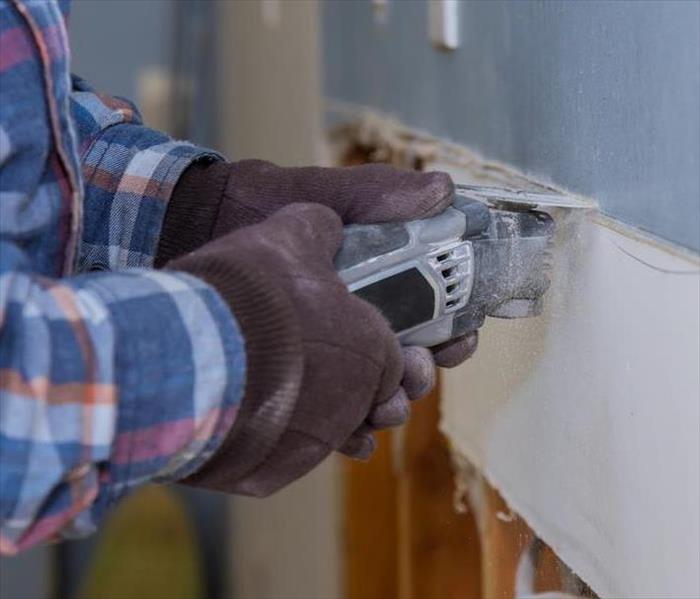Preventing Further Flooding Damage With a Flood Cut
1/25/2022 (Permalink)
 Bear in mind these important tips if you experience Flooding Damage with a Flood Cut in your Greenville, NC house.
Bear in mind these important tips if you experience Flooding Damage with a Flood Cut in your Greenville, NC house.
When flooding affects your Greenville, NC home, it may be necessary for professionals to perform a flood cut. When this happens, water cleanup and restoration technicians remove about 12 to 18 inches of drywall above the flood line. There are several reasons to take this step:
- The damage is extensive.
- Water removal has been slow.
- Your home has been exposed to sewage.
Important information to consider if you experience Flooding Damage with a Flood Cut
Although it may seem frustrating at the time, a flood cut can prevent further damage from happening.
Why a Flood Cut Is Part of Recovery After Flooding
It isn't always necessary to make a flood cut. If it's easy to see the extent of damage and there hasn't been a lot of trouble, the cleanup process could be straightforward. This is especially true if there isn't any danger of contaminants in the water. However, it is often necessary to make the cut to determine how much damage has occurred.
The Cut Allows Professionals To Measure the Spread of Damage
Flood damage is hard to limit because water quickly begins seeping into structural materials of the home and into the furnishings and belongings throughout the home. As the water begins to recede, it may be obvious that drywall has absorbed a lot of water. Unfortunately, this type of extensive exposure can often mean that damage has occurred where you can't see it. Mold growth behind the drywall is a real concern. The flood cut allows professionals to accurately measure how widespread and severe the damage is.
Water Damage Quickly Spreads Through Porous Building Materials
During heavy storms, it may be days before it's possible to get your home cleaned up and dried out. This provides plenty of time for humidity levels to build in areas of the home that weren't initially affected. In this case, there may not be any choice but to tear out some drywall. The flood cut is the first step in this process and gives professionals an idea how much repair and restoration is required.
Raw Sewage, Chemicals, and Other Contaminants May Be Present in Drywall and Insulation
Floodwaters often carry contamination as sewer systems are backed up or succumb to cracks and leaks from building pressure. A flood cut must be performed in these situations to remove all drywall, insulation, and other porous materials. Once water damage cleanup professionals have removed contaminated materials, they will test your home to be sure that there's no trace of bacterial and viral pollutants remaining.
Older Homes Are Often Problematic
How old is your home? If there's any chance that lead paint or asbestos were used in building your home, it is important that the tear out process is completed by trained professionals. Disturbing lead-based paint or insulation with asbestos without the proper techniques and protective gear can lead to increased risk.
When you really just want to get your home cleaned and dried, watching someone tear out large amounts of drywall can be frustrating. However, this step provides professionals a chance to determine how much damage there is while also preventing new damage from taking place. It is a great way to spot mold and contamination from sewage. It is also an important way to be sure that recovery from flooding is happening safely.



 24/7 Emergency Service
24/7 Emergency Service